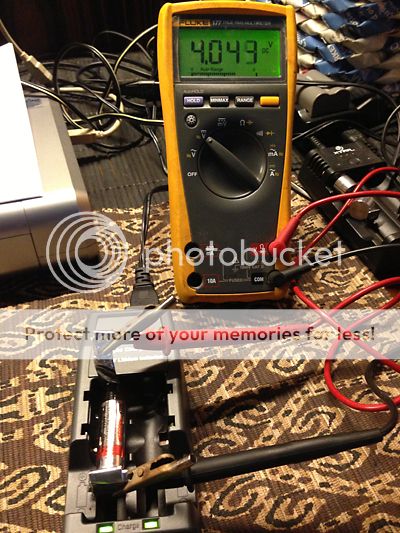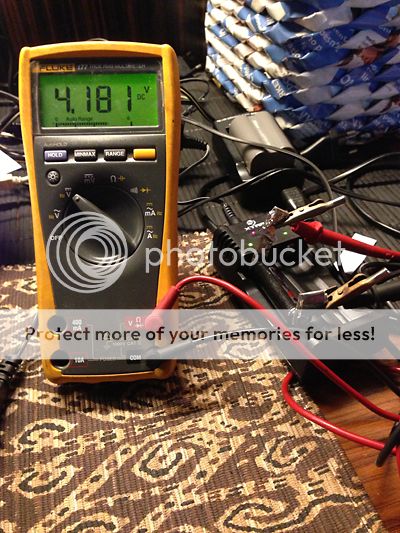Swede74
Enlightened
- Joined
- Sep 30, 2011
- Messages
- 577

This probably looks like a recipe for disaster: A ***fire cell in a ***fire charger on a combustible surface. Not to worry though, this is not how I normally charge my cells, and I use AW 14500 and 16340 in my EDC lights. I didn't want any metal near this setup, that's why I used the chair.
Now, on to my questions. As you can see, the DMM reads a higher than optimal voltage (I'm charging at the time) but it is possible that the actual voltage is about 4.25 V.
The specifications for the DMM say "basic accuracy: ± 0.5% of rdg ± 2 digit" and the way I interpret that is that the lowest possible voltage is (0.995*4.29) -2 digits ~4.25. Obviously there is a worst case scenario as well, (1.005*4.29)+2 digits ~4.33.
What I'm wondering is, since most of my cells (all are protected) measure 4.25 V when I take them off the charger (I charge until the light turns green) and assuming the charge terminated because the protection tripped, does this suggest that the DMM shows too high a voltage rather than too low?
I know it's not recommended that you rely on the protection circuit for charge termination, but at the moment this is the only charger I have. I don't mind if using this charger shorten my cells' service life a little, my main concern is safety. So my second question is: do you think I'm pushing my luck, or am I well within safe limits as long as I make sure I never leave the charger unattended, and that the cells' voltage when fully charged doesn't exceed ~4.25V?
Also, has anyone else who uses the Ultrafire WF-139 charger measured its charging voltage, and if so, what results did you get?
Thanks in advance for your input.
Last edited:




